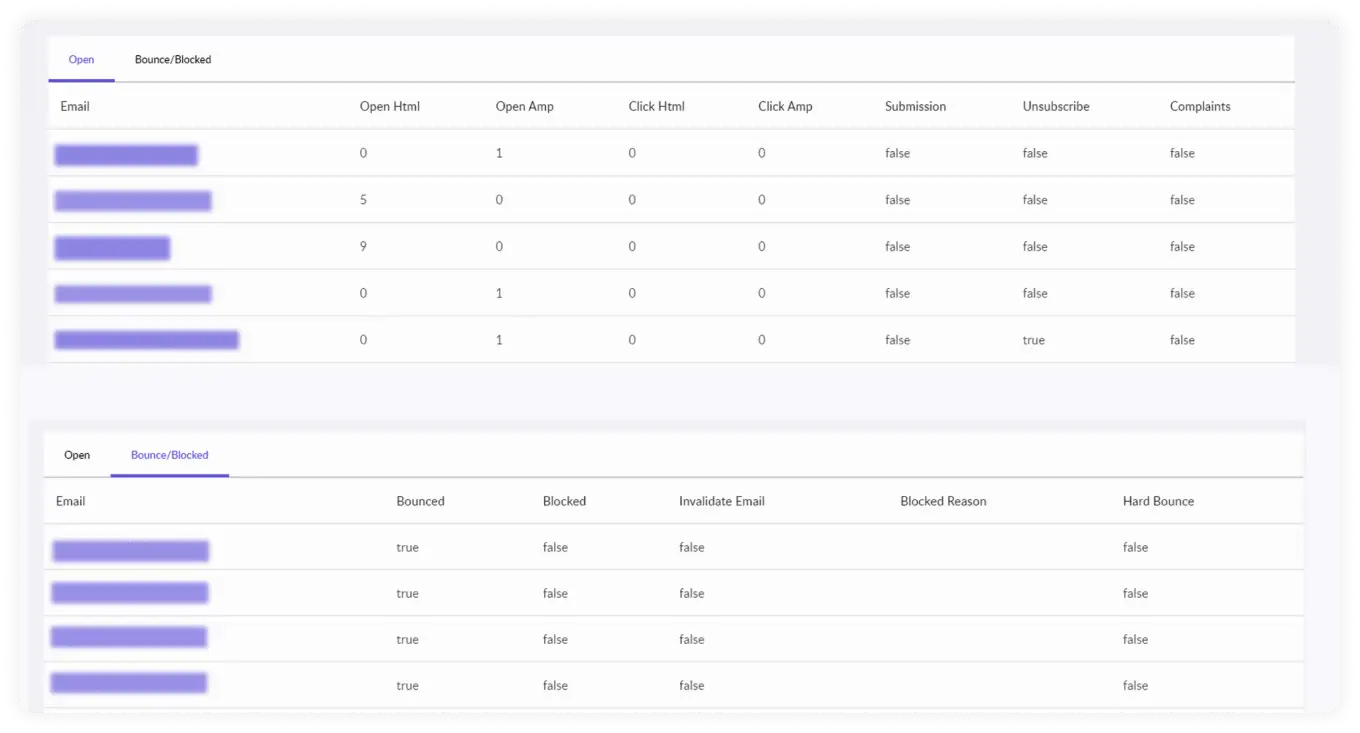If you still send emails to users after they have opted out, your emails will be reported as spam. Hence, you need to suppress such email addresses to avoid sending emails to them in the future.
How do you do that? You do this by including such users in an email suppression list.
Now, you must be thinking about a suppression list and which email ids to include in it. In that case, this article will help you.
Table of contents
What is a suppression list?
A suppression list contains all the email addresses that have opted out/unsubscribed from your emails or have marked your emails as spam.
As per CAN-SPAM act of 2003, you should give users an option to opt out of commercial emails. When someone unsubscribes, they should be added to an email suppression list to help you prevent sending emails to them in the future.
What is an email suppression list used for?
In email marketing, a suppression list is used to ensure that you send emails only to those interested in receiving them.
It helps
Maintain your domain and IP reputation.
Avoid penalties levied by the CAN-SPAM Act of 2003 due to non-compliance.
Maintain the sender's reputation by ensuring you send emails to those who want to receive them.
Avoid the spam folder as you are sending to interest parties only.
What should you include in a suppression list?
You should include the following email addresses in your suppression list:
1. Contacts who have unsubscribed
When users unsubscribe from your emails, you should add their email addresses to the suppression list. It will help avoid mistakenly sending them any future campaigns.
Unsubscribe users should be a part of your suppression list because they no longer want to receive emails. And if you don't keep track of such users, you might send them future emails. It will lead to annoyance on the user's end, and they will mark you as spam.
The more people mark your emails as spam, the more it will damage your email deliverability.
2. Users marked your email as spam
Add all the subscribers' email IDs who have marked your emails as spam. People raise spam complaints because of two reasons:
They wanted to unsubscribe but couldn't find a clear option.
They already unsubscribed, and you're still sending them an email (Read the first point again)
Sending emails to users who have raised spam complaints is to ax one's foot. You will damage the sender's reputation, impacting your future campaigns' deliverability.
3. Hard bounced email addresses
Hard bounce happens when the email address is invalid, blocked, or doesn't exist. In that case, you should include such email addresses in your suppression list.
Sending emails to such addresses will impact your delivery rate. Besides, it will also signal to the ISP that you're not practicing email list hygiene. So, you must clear such email addresses from your existing email list and add them to a new suppression list to avoid deliverability issues.
4. Inactive and disengaged users
Your recipients may become saturated after a specific time. Many of them may stop opening your emails or engaging with them. In that case, you need to suppress such non-active users.
But how do you figure out when you suppress such email addresses?
Do you suppress them after two non-opens or four or ten?
A solution to find this out is by implementing a sunset policy. It's an email list management practice using which you can define the timeline to declare someone as inactive or disengaged.
The duration can be 30 days of no activity or 60 days. It depends on your industry benchmarks, email marketing goals, and target audience's activity. But, in our opinion, 30-60 days of no activity is a good timeframe to suppress the users.
How to find email addresses to include in a suppression list?
To find unsubscribed, spam, and bounced emails, you need to use your Email Service provider's analytics. Your ESP analytics will provide you with quantitative data about email addresses you need to suppress.
For example, In Mailmodo, you can get this information under the Campaigns tab.
Choose the email campaign you want to analyze the analytics for.
Go to the User data section, and you'll see two options: Open and Bounce/blocked.
Wherever you see the 'false' tag in these options, it means that address should be suppressed.
 You can also upload your existing suppression list in Mailmodo. Follow these steps:
You can also upload your existing suppression list in Mailmodo. Follow these steps:
Go to Contacts and click on the three dots in the top right corner
Click on the Import Suppression List option.
Follow the instructions in the pop-up to upload the CSV file. In the CSV file, mention the email address and email type that address should be suppressed for.
Review both columns and click on Next to finish uploading.
Note: If you don't mention each email address's email campaigns, they will be unsubscribed from every email type.
Takeaways
A suppression list is non-negotiable to manage your email marketing campaign's performance. Don't lure into the quantity of your email list if most of them are inactive, invalid, or wrong email addresses. It will do more harm to your email marketing campaigns than good.
What you should do next
Hey there, thanks for reading till the end. Here are 3 ways we can help you grow your business:
Talk to an email expert. Need someone to take your email marketing to the next level? Mailmodo's experts are here for you. Schedule a 30-minute email consultation. Don't worry; it's on the house. Book a meet here.
Send emails that bring higher conversions. Mailmodo is an ESP that helps you to create and send app-like interactive emails with forms, carts, calendars, games, and other widgets for higher conversions. Get started for free.
Get smarter with our email resources. Explore all our knowledge here and learn about email marketing, strategies, best practices, growth hacks, case studies, templates, and more. Access guides here.


